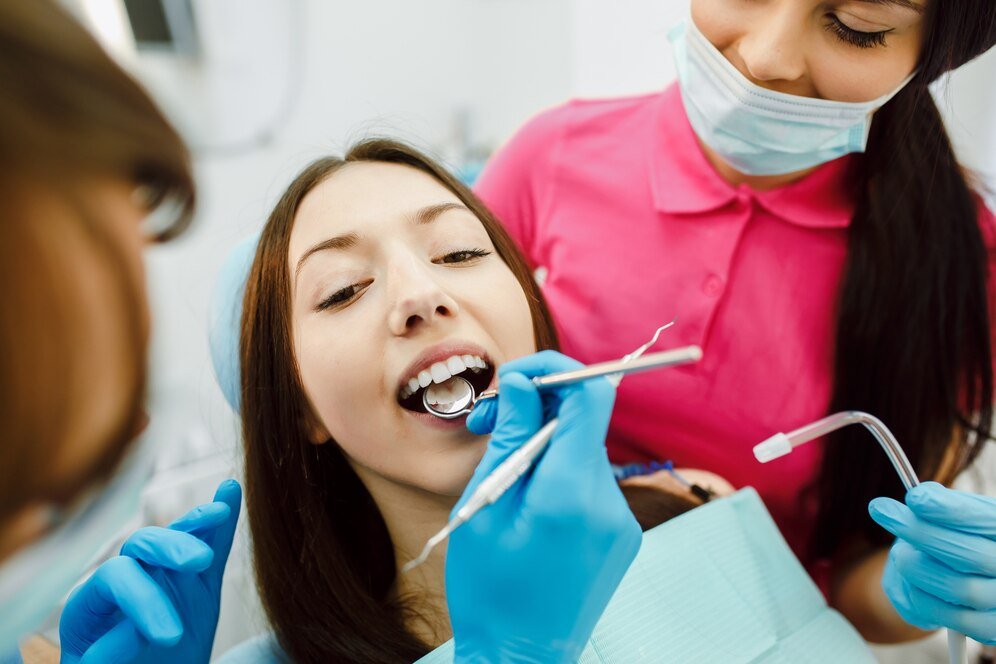A bright smile can light up a room and boost your confidence in an instant. However, achieving and maintaining white teeth can be a challenge, especially with the array of staining foods and drinks we consume daily. While professional whitening treatments are effective, they can be expensive and time-consuming. Fortunately, there are several ways to achieve and maintain a dazzling smile from the comfort of your own home. Let’s dive into the secrets of long-lasting teeth whitening at home.
Understanding Teeth Stains
Types of Teeth Stains
Teeth stains can be classified into two main types: extrinsic and intrinsic. Extrinsic stains affect the surface of the teeth and are usually caused by foods, drinks, and smoking. Intrinsic stains are deeper and can result from certain medications, trauma, or aging.
Causes of Teeth Stains
Common culprits of teeth staining include coffee, tea, red wine, soda, and tobacco. Poor dental hygiene and certain medications can also contribute to discoloration. Understanding the causes of your stains can help in choosing the most effective whitening method.
Preparation Before Whitening
Dental Hygiene Basics
Before starting any teeth whitening at home , ensure your teeth are clean and healthy. Brush twice a day, floss daily, and use an antiseptic mouthwash to keep your mouth fresh and free of plaque.
Professional Cleaning: Is It Necessary?
A professional dental cleaning can remove surface stains and tartar that at-home treatments might not address. It’s a good idea to start with a clean slate to get the best results from your whitening efforts.
At-Home Teeth Whitening Methods
Over-the-Counter Whitening Products
Over-the-counter products like whitening toothpaste, strips, and gels can be effective. Look for products with the American Dental Association (ADA) seal of approval for safety and efficacy.
Natural Remedies
Natural remedies such as baking soda, hydrogen peroxide, and oil pulling have gained popularity for their whitening effects. These methods are often gentler on your teeth and gums.
Custom Whitening Trays
Custom whitening trays from your dentist can offer a middle ground between over-the-counter products and professional treatments. They are tailored to fit your teeth perfectly, ensuring even and effective whitening.
Using Whitening Toothpaste
How Whitening Toothpaste Works
Whitening toothpaste contains mild abrasives and chemicals that help remove surface stains. They don’t change the natural color of your teeth but can make them appear brighter by removing stains.
Best Practices for Using Whitening Toothpaste
Use whitening toothpaste as part of your daily oral care routine, but don’t rely on it solely for dramatic results. Combine it with other whitening methods for the best outcome.
Whitening Strips and Gels
How to Use Whitening Strips
Whitening strips are thin, flexible plastic strips coated with a peroxide-based whitening gel. Apply them to your teeth as directed, usually for about 30 minutes daily, for a set period.
Tips for Applying Whitening Gels
Whitening gels can be applied directly to your teeth using a small brush. Be consistent with the application and avoid eating or drinking immediately after to ensure the gel stays on your teeth.
DIY Whitening Solutions
Baking Soda and Hydrogen Peroxide
A mixture of baking soda and hydrogen peroxide can create a powerful whitening paste. Use it sparingly, as overuse can damage your enamel.
Oil Pulling for Teeth Whitening
Oil pulling involves swishing coconut or sesame oil in your mouth for 15-20 minutes. This ancient practice is believed to reduce plaque and bacteria, leading to whiter teeth.
Food and Drink Habits for Maintaining Whiteness
Foods to Avoid
Limit consumption of staining foods and drinks like coffee, tea, red wine, and dark berries. If you do consume them, rinse your mouth with water afterward to minimize staining.
Teeth-Friendly Foods and Drinks
Incorporate crunchy fruits and vegetables like apples and carrots, which help clean teeth naturally. Dairy products can also help strengthen your enamel and keep your teeth white.
Daily Oral Care Routine
Brushing Techniques
Brush your teeth gently with a soft-bristled toothbrush, using circular motions. This helps remove plaque without damaging your enamel.
Importance of Flossing and Mouthwash
Flossing removes food particles and plaque from between your teeth where a toothbrush can’t reach. An antiseptic mouthwash can kill bacteria and keep your breath fresh.
Lifestyle Changes for Long-Lasting Results
Smoking and Its Effects on Teeth
Smoking is one of the biggest culprits of teeth staining. Quitting smoking can significantly improve the color and health of your teeth.
Regular Dental Check-Ups
Regular visits to your dentist can help catch any issues early and keep your teeth in top condition. Your dentist can also provide professional advice on maintaining your whitening results.
Avoiding Common Whitening Mistakes
Overuse of Whitening Products
Using whitening products too frequently can cause tooth sensitivity and enamel damage. Follow the instructions carefully and give your teeth a break between treatments.
Ignoring Sensitivity Issues
If you experience sensitivity, stop using the whitening product and consult your dentist. There are special toothpaste and treatments available to help manage sensitivity.
Myths About Teeth Whitening
Debunking Common Misconceptions
There are many myths about teeth whitening, such as “it weakens your teeth” or “it works instantly.” It’s important to have realistic expectations and understand that whitening is a gradual process.
Understanding What Really Works
Stick to scientifically proven methods and consult your dentist for advice. Avoid dubious products or remedies that promise instant results.
When to Seek Professional Help
Signs You Need a Dentist
If your teeth are deeply stained, sensitive, or you have underlying dental issues, professional help is essential. Your dentist can recommend the best course of action.
Combining Professional and At-Home Methods
A combination of professional treatments and at-home maintenance can offer the best results. Your dentist can help you develop a personalized plan.
Benefits of a Bright Smile
Confidence Boost
A bright smile can improve your self-esteem and confidence. It’s often one of the first things people notice about you.
Social and Professional Advantages
A white smile can positively impact your social interactions and professional life. It can make you appear more approachable and confident.
Conclusion
Achieving and maintaining a bright, white smile at home is entirely possible with the right techniques and a bit of dedication. By understanding the causes of stains, using effective whitening methods, and making smart lifestyle choices, you can enjoy long-lasting results. Start your journey to a dazzling smile today and enjoy the benefits of increased confidence and a radiant appearance.
FAQs
How often should I whiten my teeth at home? It depends on the method you’re using. Over-the-counter products usually recommend a specific duration, such as two weeks. It’s generally safe to repeat these treatments every few months, but always follow the product instructions.
Are natural whitening methods safe? Most natural whitening methods, like baking soda and oil pulling, are safe when used correctly and in moderation. However, it’s important not to overdo it, as excessive use can harm your enamel.
Can teeth whitening damage enamel? When used properly, most teeth whitening products are safe and won’t damage your enamel. Overuse or incorrect application, however, can lead to sensitivity and enamel erosion.
How long do whitening results typically last? Results vary depending on your diet and oral hygiene habits. Generally, whitening results can last from a few months to a year. Maintaining good oral hygiene and avoiding staining foods can prolong the effects.
What should I do if I experience sensitivity? If you experience sensitivity, stop the whitening treatment and consult your dentist. They can recommend products to reduce sensitivity and suggest alternative whitening methods.



покупка аккаунтов продать аккаунт
услуги по продаже аккаунтов купить аккаунт с прокачкой
гарантия при продаже аккаунтов магазин аккаунтов
перепродажа аккаунтов профиль с подписчиками
купить аккаунт с прокачкой аккаунт для рекламы
магазин аккаунтов магазин аккаунтов социальных сетей
безопасная сделка аккаунтов магазин аккаунтов социальных сетей
Database of Accounts for Sale Ready-Made Accounts for Sale
Online Account Store Website for Selling Accounts
Sell Account Secure Account Purchasing Platform
Secure Account Purchasing Platform Marketplace for Ready-Made Accounts
Account Acquisition Buy Account
Account Trading Service Sell Pre-made Account
Accounts marketplace Account Purchase
Profitable Account Sales Website for Buying Accounts
Secure Account Purchasing Platform Account trading platform
Account Trading Platform Account market
website for selling accounts buy pre-made account
account purchase sell pre-made account
social media account marketplace https://buyaccountsdiscount.com/
account trading service account trading
secure account sales https://buycheapaccounts.com/
buy accounts account exchange
account acquisition buy account
online account store buy and sell accounts
account trading service website for selling accounts
verified accounts for sale accounts for sale
accounts for sale guaranteed accounts
account purchase account exchange
account purchase secure account purchasing platform
account trading service gaming account marketplace
database of accounts for sale verified accounts for sale
purchase ready-made accounts account exchange service
account market account trading service
account exchange service accounts marketplace
account market account exchange service
website for selling accounts website for selling accounts
secure account purchasing platform ready-made accounts for sale
verified accounts for sale account buying service
account acquisition buy and sell accounts
social media account marketplace database of accounts for sale
account market account market
verified accounts for sale secure account purchasing platform
social media account marketplace account market
social media account marketplace https://accounts-offer.org
website for selling accounts https://accounts-marketplace.xyz
sell account https://buy-best-accounts.org/
account trading platform https://social-accounts-marketplaces.live/
account trading platform https://accounts-marketplace.live
website for selling accounts https://social-accounts-marketplace.xyz/
accounts market https://buy-accounts.space
website for selling accounts https://buy-accounts-shop.pro
purchase ready-made accounts accounts market
social media account marketplace https://accounts-marketplace.online
account sale https://accounts-marketplace-best.pro
маркетплейс аккаунтов соцсетей akkaunty-na-prodazhu.pro
купить аккаунт rynok-akkauntov.top
покупка аккаунтов https://kupit-akkaunt.xyz
купить аккаунт https://akkaunt-magazin.online/
маркетплейс аккаунтов магазины аккаунтов
биржа аккаунтов kupit-akkaunty-market.xyz
покупка аккаунтов akkaunty-optom.live
площадка для продажи аккаунтов https://online-akkaunty-magazin.xyz/
продажа аккаунтов akkaunty-dlya-prodazhi.pro
маркетплейс аккаунтов соцсетей kupit-akkaunt.online
buy aged facebook ads account https://buy-adsaccounts.work
buy facebook ad account https://buy-ad-accounts.click/
buying fb accounts https://buy-ad-account.top
buy aged fb account https://buy-ads-account.click
buy fb account fb accounts for sale
facebook accounts for sale https://buy-ads-account.work
facebook accounts for sale https://ad-account-for-sale.top/
buy facebook ad accounts https://buy-ad-account.click/
buy aged fb account https://ad-accounts-for-sale.work
google ads account for sale google ads reseller
buy google ad account https://buy-ads-accounts.click
facebook accounts for sale https://buy-accounts.click/
old google ads account for sale https://ads-account-for-sale.top
buy verified google ads accounts https://ads-account-buy.work/
buy google ads buy google ads threshold account
buy aged google ads accounts https://buy-account-ads.work
buy adwords account https://buy-ads-agency-account.top
buy google adwords accounts https://sell-ads-account.click
buy google adwords account https://ads-agency-account-buy.click
facebook business account for sale https://buy-business-manager.org
buy google ads threshold accounts https://buy-verified-ads-account.work
business manager for sale buy-bm-account.org
buy facebook bm https://buy-verified-business-manager-account.org
buy verified bm buy-verified-business-manager.org
buy verified facebook business manager account buy verified facebook business manager account
buy facebook business manager accounts https://business-manager-for-sale.org/
buy fb bm https://buy-business-manager-verified.org/
business manager for sale https://buy-bm.org/
buy facebook business manager account https://verified-business-manager-for-sale.org/
buy bm facebook buy-business-manager-accounts.org
buy tiktok ads accounts https://buy-tiktok-ads-account.org
buy tiktok ads account https://tiktok-ads-account-buy.org
buy tiktok ad account https://tiktok-ads-account-for-sale.org
tiktok agency account for sale https://tiktok-agency-account-for-sale.org
tiktok ad accounts https://buy-tiktok-ad-account.org
buy tiktok ads account https://buy-tiktok-ads-accounts.org
buy tiktok business account https://tiktok-ads-agency-account.org
buy tiktok ads accounts https://buy-tiktok-business-account.org
tiktok ads agency account https://buy-tiktok-ads.org